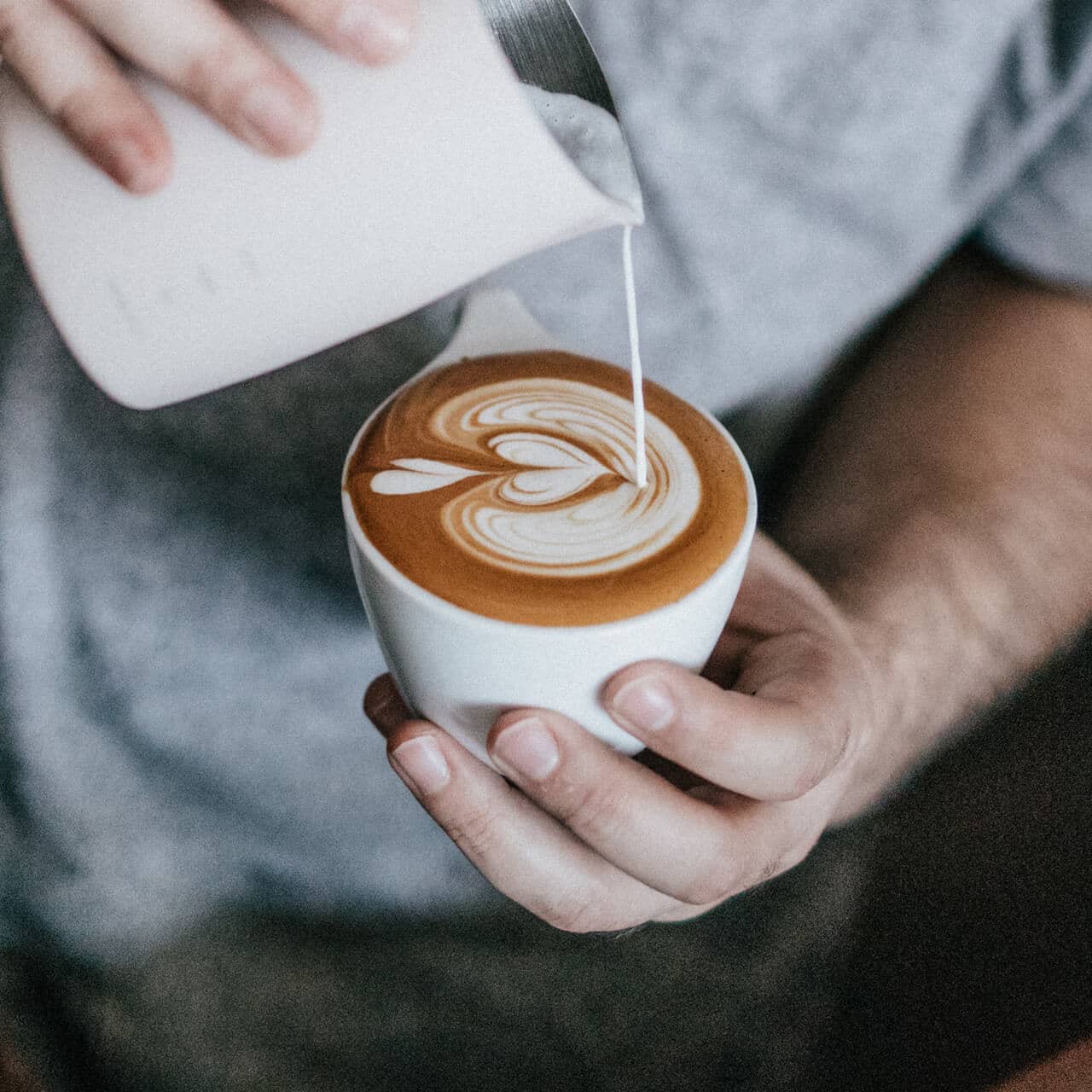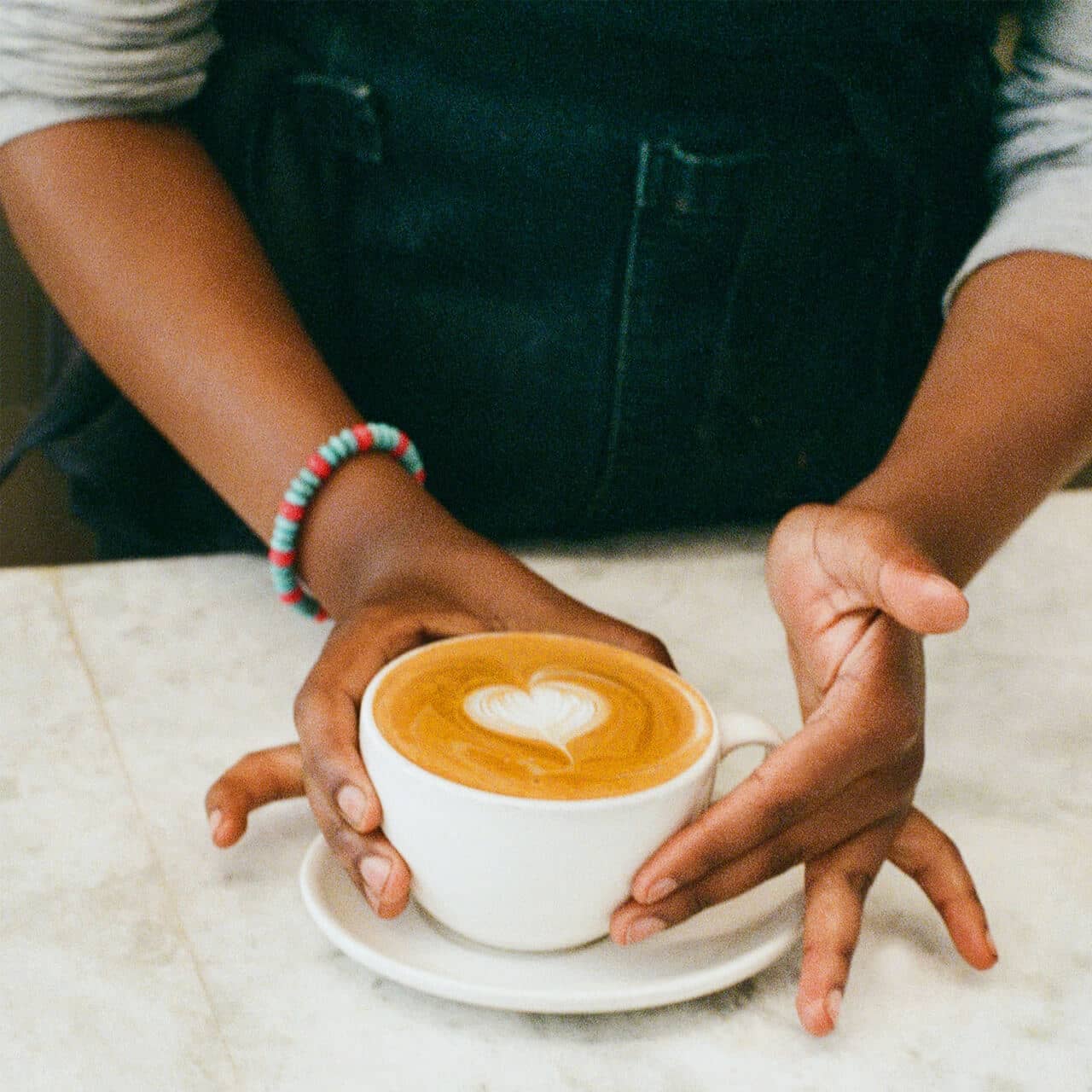
Heart, tulip, swan – When baristas do their magic with milk foam, they don’t do it to show off. Of course, a pretty shape on our coffee looks nice and wows us every time, but this type of decorative foam is also an indication for perfectly prepared milk – and thereby also for a good barista.
Practice. A lot of practice. And the right milk jug. It definitely needs a pouring spout in order to pour the foam in a controlled manner. We recommend a classic jug made of stainless steel. It allows you to feel the temperature from the outside (not over 150°F to avoid burning the mild sugar). It can easily be cleaned. It is also slightly more bulbous towards the bottom, which makes the pouring much easier. For a cappuccino you only need a small jug (approx. 12oz), the 16oz option is perfect for two cappuccinos.
foto:
nathan dumlao on unsplash

Clearly, latte art does not work with cold or just hot milk, you need foam. Foam that has the perfect consistency. If it is too firm, it cannot penetrate the surface of the espresso in order to combine with the crema. If it is too runny, it won’t rise to the crema. So, how to get perfect milk foam?
The perfect milk foam needs ultra-fine bubbles, the so-called micro foam. Micro foam develops after the initial steaming (“drawing phase”), when you start moving the jug (“rolling phase”). The bubbles are distributed and become finer and finer – et voilà: the micro foam. You need to continue moving the jug, until you start pouring. Before that, tap the jug on the countertop once, to cause larger bubbles to collapse. Then, grab a cup. For starters, go for a larger cup (that makes it easier for beginners). In any case, the cup should be round and wide open towards the top.
foto:
yasamine june on unsplash

foto: yasamine june on unsplash
To pour a heart, make sure that the position of the jug allows the jet of milk to dip in towards the rim of the cup and not in the middle. Raise the jug about 2 inches above the cup. The frothed milk now dives below the crema and spreads around the pouring point in the shape of an apple. This is the actual “painting area”. Slowly continue pouring, until the cup is half full. Then, lower the jug just above the painting area. The circle of milk foam gets larger, the more you pour (logically).
When the cup is almost full, hold the jug a bit higher again and quickly pull it to the opposite rim of the cup. The crema is moved aside and you get the two typical halves and the tip of the heart. All clear? So much for the theory. Now you need to practice.
The two most important factors of pouring are the height and the speed. If you hold the jug too high the crema is lifted and the milk settles underneath it. If you hold it too low, the crema will mix with the milk. If it is poured too slowly, there won’t be enough movement in the cup and the milk won’t rise. If you pour too quickly, the crema will mix with the milk and you get a nice light brown cappuccino – tastes good, but does not count as latte art.
As we said: Practice is the key.
Phone +49 (0) 40 753 04 – 485
Fax +49 (0) 40 753 04 – 492
e-mail: info@mounthagen.de
